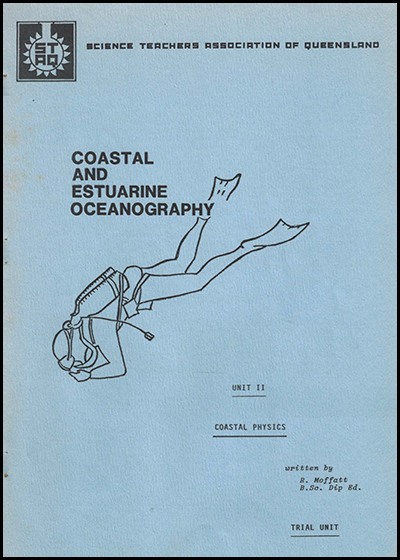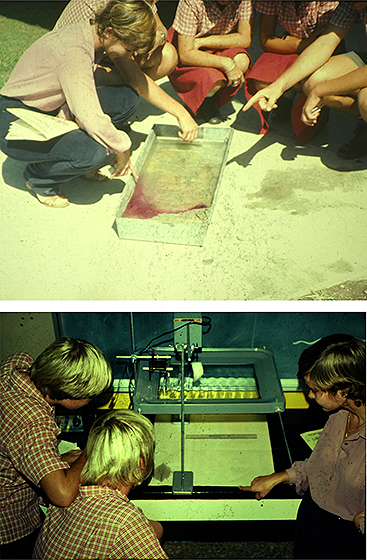1982 STAQ Coastal physics Trial

ISBN : 0 9598303 8 3
Published Date : 01 June 1982
Product Code : 1982 STAQ
Format : PDF Free archive download
Wet Paper pdf file licence conditions
By downloading this file your school agrees to the following conditions.
The publisher and author/s of this pdf file grants to the school a revocable, non-exclusive, non-transferable right and licence to use the content, exercises, lab and field work lesson notes within the school for educational purposes only.
The title to, and intellectual property in these online resources rests with the publisher's author, illustrators, photographers and design consultants and nothing in the agreement should be construed as transferring those rights to the school.
Copyright
Except as permitted by the Copyright Act 1968 (Cth), you may not reproduce any of the contents of this publication, without the written permission of the copyright owner.
Educational exemption
There are exemptions under the Act that allow educational and government use of text, images and music scores for educational purposes.
These exemptions are in Part VB of the Copyright Act 1968 (Cth), where you are entitled to reproduce or communicate 10% of the words or one chapter from this file for educational use within your school. If you wish to reproduce or communicate MORE than 10% contact the copyright owner.
For more information, see www.copyright.com.au and www.copyright.org.au.
Teachers Information
Acknowledgements
From the original unit. " My thanks must go to S.T.A.Q. for providing the financial backing and support for this project. Thanks also to my Mother and Father who deciphered and typed my bad writing; and to Len Zell of the Great Barrier Reef Marine Park Authority who read and critised the draft and for making many useful contributions. As this is a first draft any comments would be gratefully acknowledged."
From the original ....
The following helped and advised Allistair Martin (M.S.C. Tas.); David Kopelke (B.I.F.S.C. Qld); Jim Redfield (C.S.I.R.O.); Roy Jenkins (F.U.S.E.); Dennis Bridger; Ann Kenny; Graham Mitchell; Greg Martin; Steve Hall (G.S.H.S. ; Sue Oates; Merrin Kilgour (B.S.H.S.); and the Departments of Harbours and Marine, Fisheries, Oceanography, Great Barrier Reef Marine Park Authority, The Beach Protection Authority, Gold Coast WaterWays Authority and The Brisbane Education Centre for all their help.
I also must pay tribute to the inspirtional leadership of Dr Cec Burr from the Mt Gravatt College of Advanced Education, whose STAQ conferences were an inspiration. Special mention to Bob McAllistar from STAQ whose provided the leadership to have the trial materials published and to the Brisbane Education Centre Judi Zolecki for typing the drafts.
Syllabus topic - Man, Resources and Environment
Rationale
The extent and type of resource development in any society depends on the goals and values of that society. These goals and values are not determined in isolation but are historically and culturally conditioned.
Two kinds of processes may follow from this realisation.
Firstly, better management and planning can be called for, aimed to minimise the 'less than desirable consequences of resource development; for example, State Governments in Australia legislate to control exhaust emissions from cars to minimise the effect of these emissions on the environment.
In addition, a re-evaluation and possibly modification of social goals may occur simultaneously. For example re-evaluation of the consequences of unrestrained personal urban mobility has lead to improved public transport systems.
One purpose of the topic 'Man, Resources and Environment' is to increase awareness of such processes, and thus encourage responsible participation in them.
Bob saw that the concepts of beach erosion caused by building too close to the coastline and the processes by which it occurred, fitted perfectly into this topic.
Background
This unit resulted from funding from sales of the STAQ Marine Science series produced through through the Brisbane Education Centre. The brainchild of Bob Moffatt, it drew on his experience as a surfer growing up in the 1960's at Alexandra Headlands Queensland and the way Physics could be applied to Marine Science in the new Multistrand Science syllabus topic - Man, Resources and Environment.
Bob was greatly helped by his mentors from the STAQ executive at the time (Bob McAllistar, Cecily Gredden) and the great conferences run by leaders such as Drs Jack Marsh, Cam McRobbie, Cec Burr, David Tulip and Keith Lucas.
In the forward he wrote:
"TO GREAT DAYS AT THE ALEX"
Australia's coastline forms a special place in our environment because over 90% of us live there. Due to different Ecological, Economic, Social and Recreational interests many conflicts arise over the use of our Estuaries, Beaches and Barrier Reefs. Sand Mining, High Rise development, Longline Fishing, Low water Land sales, Resort development and oil Pollution are but a few of the real issues that face us now. There is an urgent need for all Australians to develop an attitude towards sensible resolution of these conflicts. This set of notes is one in a series that hopefully will give students the skills necessary to become involved in these issues and make sensible contributions to coastal environmental decision making. In doing so I hope that the coastline may be managed in such a way that future Australians will derive as much pleasure out of it as I have.
The purpose of this TRIAL unit was to see
a. if marine science activities could be used to match the new Qld Multistrand Science syllabus
b. If they actually worked
c. if they received a favourable peer review at BSSS moderation meetings
Support Material
School ripple tanks
Beach Protection Authority Pamphlets
Contents
Waves, currents and beaches
Wave formation
Breaking waves
Wave reflection and refraction
Beach currents
Point diffraction
Refraction
Wave set up and set down
Longshore currents
Depositional landforms from longshore currents
How Man interfere with longshore currents
Beach erosion
Classroom experiments waves, refraction, currents and groins
Tides
The importance of tides
Sun, Earth Moon systems
The Moon's orbit
Rotation fo the Moon
Gravitation and tides
Daily tides
Spring and Need tides
River tides
Investigations - Plotting the tide and Tide Models by FUSE






